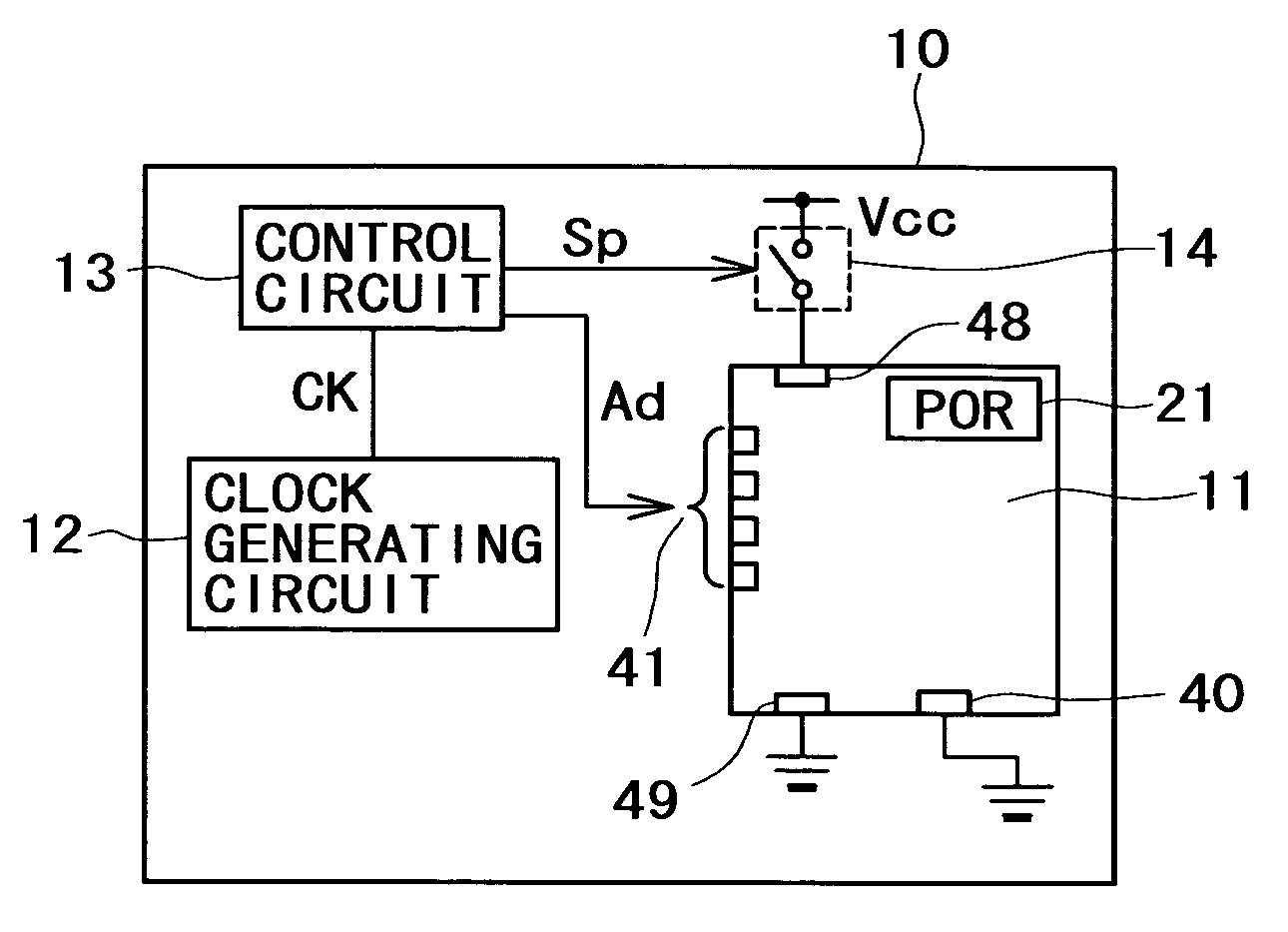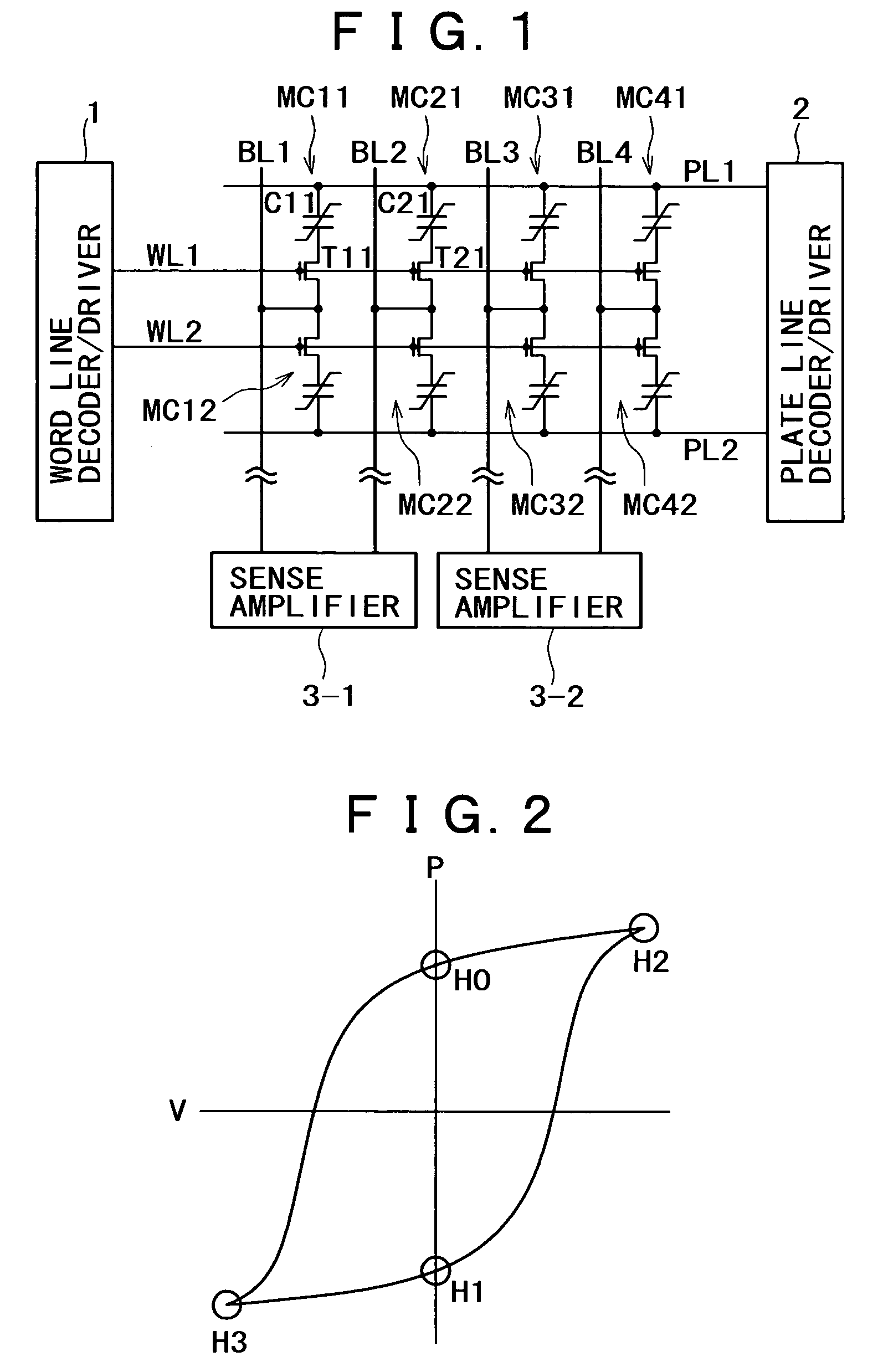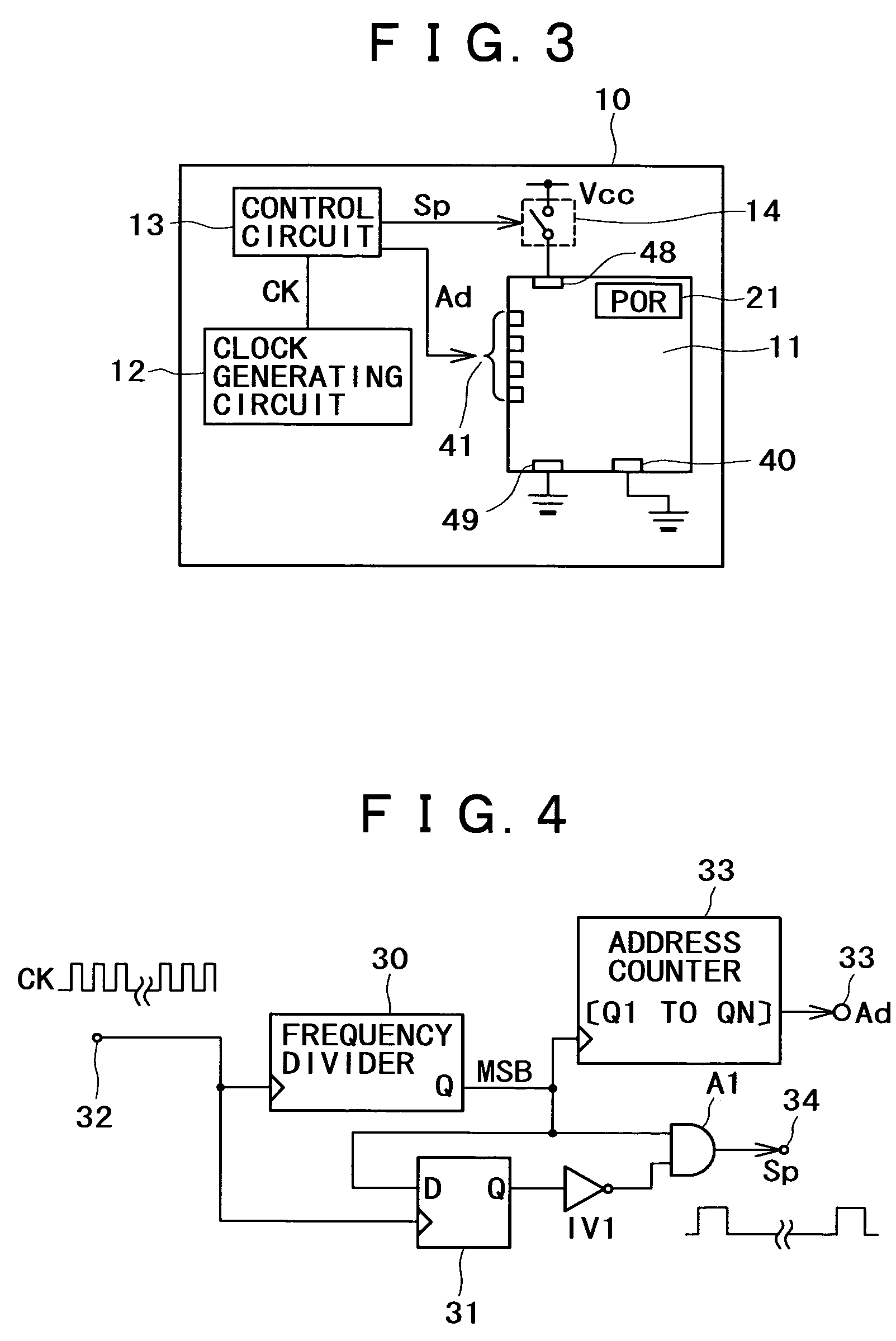Information processing apparatus and semiconductor memory
a technology of information processing apparatus and semiconductor memory, which is applied in the direction of digital storage, basic electric elements, instruments, etc., can solve the problems of frequent battery change, inability to spontaneously retain data, and volatile dram, and achieve reliable data retention over a long period of time.
- Summary
- Abstract
- Description
- Claims
- Application Information
AI Technical Summary
Benefits of technology
Problems solved by technology
Method used
Image
Examples
fourth embodiment
[0077]A first to the present invention will hereinafter be described, and thereafter a refresh sequence suitable for the embodiments will be described.
first embodiment
[0078]FIG. 3 shows a configuration of main parts of a FIG. 3 shows a memory chip 11 included in a computer apparatus (information processing apparatus) 10, and particularly shows a memory control configuration at a time of nonuse in the computer apparatus 10.
[0079]The time of nonuse of the apparatus specifically supposes that while a power supply switch of a user interface is turned off and the user does not communicate with the apparatus, the apparatus itself can be supplied with power as required via an internal battery or an adaptor to an external power supply.
[0080]The memory chip 11 in this example includes a memory cell array as a ferroelectric memory and a circuit system for driving the memory cell array (a word line decoder / driver, a sense amplifier, a plate line decoder / driver, and the like) as described with reference to FIG. 1, for example.
[0081]The memory chip 11 is supplied with operating power from a power supply terminal 48. A ground terminal 49 is grounded.
[0082]In ...
third embodiment
[0135]FIG. 8 shows an example of circuit connection during standby of the memory chip 11c of the
[0136]The memory chip 11c has a power supply terminal 48 supplied with operating power Vcc.
[0137]A timer circuit 18 disposed within the memory chip 11c has functions of both the clock generating circuit 12 and the control circuit 13 in the first embodiment (FIGS. 3 to 5). The timer circuit 18 is supplied with current from the power supply terminal 48 at all times during standby. The timer circuit 18 is connected to a ground at all times by a ground terminal 49. The timer circuit 18 is thus operable during standby.
[0138]The timer circuit 18 outputs a power-on pulse Sp for periodic on / off control of power to a memory core 15c during standby. The timer circuit 18 also outputs an address signal Ad from an internal counter. The timer circuit 18 further supplies a refresh start timing signal RfS for the memory core 15c at appropriate times.
[0139]In addition, an inverter IV11 and a switch Q1 for...
PUM
 Login to View More
Login to View More Abstract
Description
Claims
Application Information
 Login to View More
Login to View More - R&D
- Intellectual Property
- Life Sciences
- Materials
- Tech Scout
- Unparalleled Data Quality
- Higher Quality Content
- 60% Fewer Hallucinations
Browse by: Latest US Patents, China's latest patents, Technical Efficacy Thesaurus, Application Domain, Technology Topic, Popular Technical Reports.
© 2025 PatSnap. All rights reserved.Legal|Privacy policy|Modern Slavery Act Transparency Statement|Sitemap|About US| Contact US: help@patsnap.com



